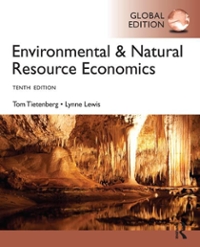Why do many real-world examples of Dutch disease originate
from developments in energy products? Explain in detail?
?
Case Study The Dutch Disease and Deindustrialization Developing a new exportable natural resource can cause problems. One, discussed later in this chapter, is the problem of "immiserizing growth": If you are already exporting and your export expansion lowers the world price of your exports, you could end up worse off. A second is the apparent problem called the Dutch disease, in which new production of a natural resource results in a decline in production of manufactured products (deindustrialization). For the Netherlands, the origin of the disease was the development of new natural gas fields under the North Sea during the 1960s. It seemed that the more the Netherlands developed its natural gas production, the more depressed its manufacturers of traded goods became. Even the windfall price increases that the two oil shocks in the 1970s offered the Netherlands (all fuel prices skyrocketed, including that for natural gas) seemed to add to industry's slump. The Dutch disease has been thought to have spread to Britain, Norway, Australia, Mexico, and other countries that have newly developed natural resources. The main premise of this fear is correct: Under many realistic conditions, the windfall of a new natural resource does indeed erode profits and production in the manufactured goods sector. Deindustrialization occurs for the same reason that underlies the Rybczynski theorem introduced in this chapter: The new sector draws production resources away from the manufacturing sector. Specifically, to develop output of the natural resource, the sector must hire labor away from the manufacturing sector, and it must obtain capital that otherwise would have been invested in the manufacturing sector. Thus, the manufacturing sector contracts. Journalistic coverage of the link between natural resource development and deindustrialization tends to discover the basic Rybczynski effect in a different way. The press tends to notice that the development of the exportable natural resource causes the nation's currency to rise in value on foreign exchange markets because of the increased demand forthe country's currency as foreign buyers pay for their purchases. A higher value of the nation's currency makes it harder for its industrial firms to compete against foreign products whose price is now relatively lower. To the manufacturing sector this feels like a drop in demand, and the sector contracts. The foreign exchange market, in gravitating back toward the original balance of trade, is producing the same result we would get from a barter trade model: If you export more of a good, you'll end up either exporting less of another good or importing more. Something has to give so that trade will return to the same balance as before. Even though the Dutch disease does lead to some deindustrialization, it is not clear that this is really a national problem. Merely shifting resources away from the manufacturing sector into the production of natural resources is not necessarily bad, despite a rich folklore assuming that industrial expansion is somehow key to prosperity. The country usually gains from developing production of its natural resources, as long as this growth does not tip into the realm of the immiserizing








